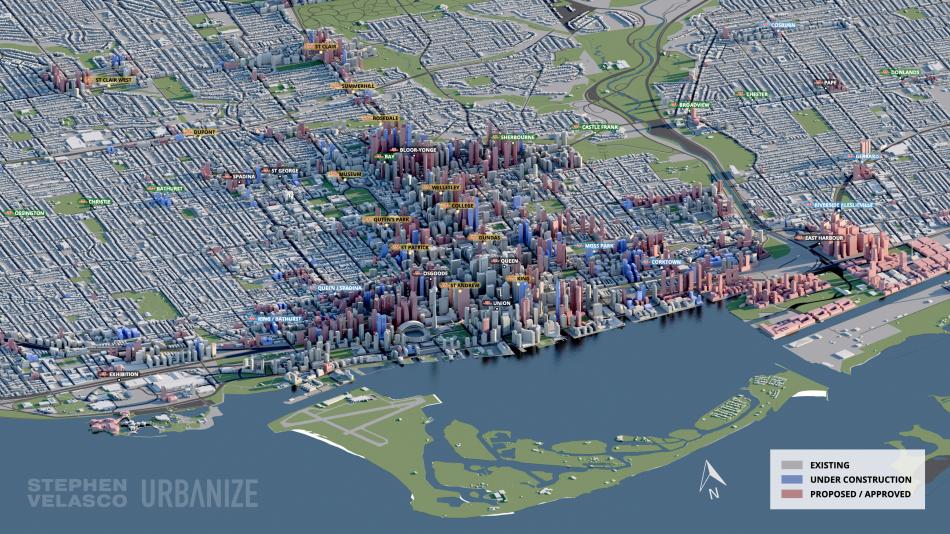Toronto has emerged as the leader in population growth across both Canada and the United States according to a recent report by the Centre for Urban Research and Land Development. The city and its metropolitan area experienced significant growth, far outpacing American counterparts for the year ending in July 2023.
The City of Toronto added 125,756 residents, while its metropolitan area grew by 221,588. These figures dwarf the growth in the largest American city, San Antonio, which saw an increase of 21,970 people, and the Dallas metropolitan area, which grew by 152,598.
 Overview of development activity in Toronto's Downtown CoreImage Credit: Stephen Velasco / Urbanize Toronto
Overview of development activity in Toronto's Downtown CoreImage Credit: Stephen Velasco / Urbanize Toronto
Key findings from the report:
- Top Performers: Eight of the ten fastest-growing central cities are in Canada, with Toronto, Calgary, Montreal, Edmonton, Winnipeg, Ottawa, and Vancouver leading the charge. In contrast, all nine major central cities that lost population are located in the United States, including New York City, Philadelphia, and Chicago.
- Metropolitan Area Growth: Five of the ten fastest-growing metropolitan areas are split between each respective country. Notably, three Canadian metropolitan areas—Toronto, Montreal, and Vancouver—each saw increases of over 100,000 people.
- Population Declines most prevalent in the U.S.: In the United States, several metropolitan areas experienced population losses in 2023. Metropolitan Los Angeles, New York, and Chicago recorded the most significant declines, while none of Canada’s 48 metropolitan areas reported a population decrease.
The report also highlights the significant impact of immigration on Toronto's growth, with nearly 50% of its metropolitan population being foreign-born as of the 2021 Census. This trend underscores Toronto’s growing role as a key economic and cultural hub in North America.
For well over a decade, Toronto has been in the midst of a transformative development boom that is rapidly reshaping its urban landscape, as we have covered previously. The city’s extraordinary growth in 2023 reflects a broader trend of urban expansion and economic growth in Canada, contrasting with the slower or negative growth patterns seen in many major U.S. cities.
Background:
The report compares population growth in major Canadian and U.S. cities and metropolitan areas based on estimates from Statistics Canada and the U.S. Census Bureau. It emphasizes the differing definitions of metropolitan areas between the two countries, noting that U.S. metropolitan areas tend to cover larger geographic areas and populations.






